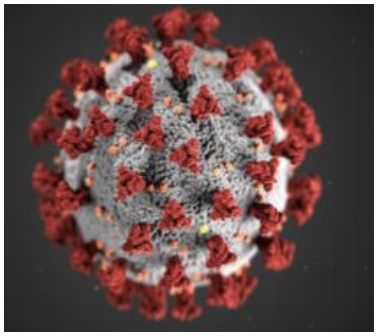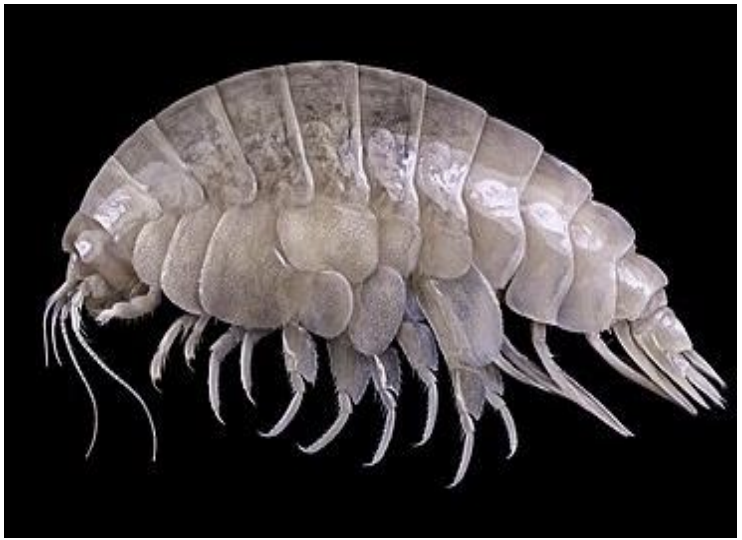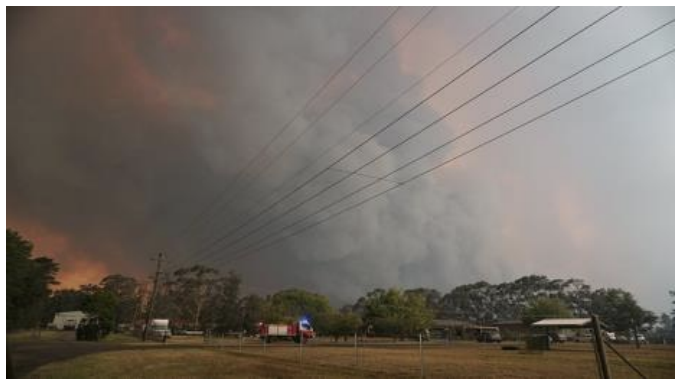21: Epilogue
- Page ID
- 88894
\( \newcommand{\vecs}[1]{\overset { \scriptstyle \rightharpoonup} {\mathbf{#1}} } \)
\( \newcommand{\vecd}[1]{\overset{-\!-\!\rightharpoonup}{\vphantom{a}\smash {#1}}} \)
\( \newcommand{\dsum}{\displaystyle\sum\limits} \)
\( \newcommand{\dint}{\displaystyle\int\limits} \)
\( \newcommand{\dlim}{\displaystyle\lim\limits} \)
\( \newcommand{\id}{\mathrm{id}}\) \( \newcommand{\Span}{\mathrm{span}}\)
( \newcommand{\kernel}{\mathrm{null}\,}\) \( \newcommand{\range}{\mathrm{range}\,}\)
\( \newcommand{\RealPart}{\mathrm{Re}}\) \( \newcommand{\ImaginaryPart}{\mathrm{Im}}\)
\( \newcommand{\Argument}{\mathrm{Arg}}\) \( \newcommand{\norm}[1]{\| #1 \|}\)
\( \newcommand{\inner}[2]{\langle #1, #2 \rangle}\)
\( \newcommand{\Span}{\mathrm{span}}\)
\( \newcommand{\id}{\mathrm{id}}\)
\( \newcommand{\Span}{\mathrm{span}}\)
\( \newcommand{\kernel}{\mathrm{null}\,}\)
\( \newcommand{\range}{\mathrm{range}\,}\)
\( \newcommand{\RealPart}{\mathrm{Re}}\)
\( \newcommand{\ImaginaryPart}{\mathrm{Im}}\)
\( \newcommand{\Argument}{\mathrm{Arg}}\)
\( \newcommand{\norm}[1]{\| #1 \|}\)
\( \newcommand{\inner}[2]{\langle #1, #2 \rangle}\)
\( \newcommand{\Span}{\mathrm{span}}\) \( \newcommand{\AA}{\unicode[.8,0]{x212B}}\)
\( \newcommand{\vectorA}[1]{\vec{#1}} % arrow\)
\( \newcommand{\vectorAt}[1]{\vec{\text{#1}}} % arrow\)
\( \newcommand{\vectorB}[1]{\overset { \scriptstyle \rightharpoonup} {\mathbf{#1}} } \)
\( \newcommand{\vectorC}[1]{\textbf{#1}} \)
\( \newcommand{\vectorD}[1]{\overrightarrow{#1}} \)
\( \newcommand{\vectorDt}[1]{\overrightarrow{\text{#1}}} \)
\( \newcommand{\vectE}[1]{\overset{-\!-\!\rightharpoonup}{\vphantom{a}\smash{\mathbf {#1}}}} \)
\( \newcommand{\vecs}[1]{\overset { \scriptstyle \rightharpoonup} {\mathbf{#1}} } \)
\(\newcommand{\longvect}{\overrightarrow}\)
\( \newcommand{\vecd}[1]{\overset{-\!-\!\rightharpoonup}{\vphantom{a}\smash {#1}}} \)
\(\newcommand{\avec}{\mathbf a}\) \(\newcommand{\bvec}{\mathbf b}\) \(\newcommand{\cvec}{\mathbf c}\) \(\newcommand{\dvec}{\mathbf d}\) \(\newcommand{\dtil}{\widetilde{\mathbf d}}\) \(\newcommand{\evec}{\mathbf e}\) \(\newcommand{\fvec}{\mathbf f}\) \(\newcommand{\nvec}{\mathbf n}\) \(\newcommand{\pvec}{\mathbf p}\) \(\newcommand{\qvec}{\mathbf q}\) \(\newcommand{\svec}{\mathbf s}\) \(\newcommand{\tvec}{\mathbf t}\) \(\newcommand{\uvec}{\mathbf u}\) \(\newcommand{\vvec}{\mathbf v}\) \(\newcommand{\wvec}{\mathbf w}\) \(\newcommand{\xvec}{\mathbf x}\) \(\newcommand{\yvec}{\mathbf y}\) \(\newcommand{\zvec}{\mathbf z}\) \(\newcommand{\rvec}{\mathbf r}\) \(\newcommand{\mvec}{\mathbf m}\) \(\newcommand{\zerovec}{\mathbf 0}\) \(\newcommand{\onevec}{\mathbf 1}\) \(\newcommand{\real}{\mathbb R}\) \(\newcommand{\twovec}[2]{\left[\begin{array}{r}#1 \\ #2 \end{array}\right]}\) \(\newcommand{\ctwovec}[2]{\left[\begin{array}{c}#1 \\ #2 \end{array}\right]}\) \(\newcommand{\threevec}[3]{\left[\begin{array}{r}#1 \\ #2 \\ #3 \end{array}\right]}\) \(\newcommand{\cthreevec}[3]{\left[\begin{array}{c}#1 \\ #2 \\ #3 \end{array}\right]}\) \(\newcommand{\fourvec}[4]{\left[\begin{array}{r}#1 \\ #2 \\ #3 \\ #4 \end{array}\right]}\) \(\newcommand{\cfourvec}[4]{\left[\begin{array}{c}#1 \\ #2 \\ #3 \\ #4 \end{array}\right]}\) \(\newcommand{\fivevec}[5]{\left[\begin{array}{r}#1 \\ #2 \\ #3 \\ #4 \\ #5 \\ \end{array}\right]}\) \(\newcommand{\cfivevec}[5]{\left[\begin{array}{c}#1 \\ #2 \\ #3 \\ #4 \\ #5 \\ \end{array}\right]}\) \(\newcommand{\mattwo}[4]{\left[\begin{array}{rr}#1 \amp #2 \\ #3 \amp #4 \\ \end{array}\right]}\) \(\newcommand{\laspan}[1]{\text{Span}\{#1\}}\) \(\newcommand{\bcal}{\cal B}\) \(\newcommand{\ccal}{\cal C}\) \(\newcommand{\scal}{\cal S}\) \(\newcommand{\wcal}{\cal W}\) \(\newcommand{\ecal}{\cal E}\) \(\newcommand{\coords}[2]{\left\{#1\right\}_{#2}}\) \(\newcommand{\gray}[1]{\color{gray}{#1}}\) \(\newcommand{\lgray}[1]{\color{lightgray}{#1}}\) \(\newcommand{\rank}{\operatorname{rank}}\) \(\newcommand{\row}{\text{Row}}\) \(\newcommand{\col}{\text{Col}}\) \(\renewcommand{\row}{\text{Row}}\) \(\newcommand{\nul}{\text{Nul}}\) \(\newcommand{\var}{\text{Var}}\) \(\newcommand{\corr}{\text{corr}}\) \(\newcommand{\len}[1]{\left|#1\right|}\) \(\newcommand{\bbar}{\overline{\bvec}}\) \(\newcommand{\bhat}{\widehat{\bvec}}\) \(\newcommand{\bperp}{\bvec^\perp}\) \(\newcommand{\xhat}{\widehat{\xvec}}\) \(\newcommand{\vhat}{\widehat{\vvec}}\) \(\newcommand{\uhat}{\widehat{\uvec}}\) \(\newcommand{\what}{\widehat{\wvec}}\) \(\newcommand{\Sighat}{\widehat{\Sigma}}\) \(\newcommand{\lt}{<}\) \(\newcommand{\gt}{>}\) \(\newcommand{\amp}{&}\) \(\definecolor{fillinmathshade}{gray}{0.9}\)Reminder: If links have become inactive, google key words/terms for alternative sources.
We began this textbook with a testimony to the marvels of what science can accomplish. In Chapter 1 we defined the scientific enterprise as both intuitive and disciplined and learned that the goal of learning science and its methods is to prepare us to ask creative questions and to answer them. In Chapter 1 we learned that prebiotic chemical evolution set the stage for life’s origins and that evolution is a key property of life itself, leading inexorably to the incredible diversity of life on which Darwin predicated his theory of natural selection. In Chapter 1 we also noted the natural role of extinction in favoring diversity… and how recent human activity accelerated the near extinction of the American bison and the final extinction of the passenger pigeon. The role of evolution in creating diversity is emphasized throughout the book. This is a moment to consider the threat of human activity to life on Earth that has only increased since the last known passenger pigeon died in 1914. Here are some more recent threats.
- Smog Problems in big cities (notably Los Angeles) date back to the 1940s. After much resistance to evidence that auto emissions were the cause, public acceptance came in the 1950s. Congress responded in 1963 by passing the first Clean Air Act and set some emission standards 2 years later. In 1975 the U.S. mandated catalytic converters on all new cars. California still has some of the worst air in the country. But ozone in Los Angeles has been at 40% of its mid-1970s level, despite twice the number of cars. Here is smog in L.A. in 2006:

By Diliff-Own work; CC-BY-SA 3.0, L.A. Smog in 2006
And now, read about days of smog in June, 2020 at Winning the Air Pollution Battle in L.A.?
- Plagues, epidemics and pandemics have been with us since ancient times. More recent ones include an 1889 influenza (flu) pandemic, thought to have started in Russia, that killed an estimated million people worldwide by 1890. World War I began 24 years later, ending in 1918 with 20 million (mostly men) dead. Then the flu pandemic of 1918 wasted no time killing an estimated 50,000,000+ men and women worldwide, proving once again, that nature always gets the upper hand. The 2009 swine flu (H1N1pdm09) pandemic killed an estimated 100,000-500,000+ people worldwide, coming after other recent gentle reminders that nature can still plague us (e.g., SARS in 2002-03, the ‘bird flu in 2003-07). As if to drive home this message, in 2020 we have COVID-19, a respiratory disease caused by SARS-CoV-2, a novel corona RNA virus.

COVID-19 Viral Particle: Public Domain; SARS-CoV-2 (CDC/Alissa Eckert, MS; Dan Higgins, MAMS)
The red projections on the surface are composed of ‘spike proteins’ that that enable the virus infect cells
COVID-19 surfaced in China in late 2019, spreading rapidly. By March 11, 2020 with >250,000 infections world-wide and >10,000 dead, the WHO (World Health Organization) labeled COVID-19 a pandemic. With the SARS-CoV-2 genome quickly sequenced and PCR-based and serological tests for the virus rapidly developed, several countries (e.g., China, Israel, Italy, South Korea…) seemed to have controlled the spread of COVID-19 with the help of quarantines and shutdowns of schools, businesses and large entertainment and other events. Pfizer, Moderna and Johnson & Johnson became household names when these companies rapidly developed the first vaccines against SARS-CoV-2. The Pfizer vaccine first became available in the U.S. in December of 2020. The Johnson & Johnson vaccine was a traditional one that works by injecting spike protein to stimulate the immune response. Originally a single dose vaccine, it is now a two-shot (one-and-booster shot) vaccine. The Pfizer and Moderna vaccines were designed to be delivered in two separate doses but now include a third (two-and booster) dose. The Pfizer and Moderna vaccines are the first ever cDNA-based vaccines, in which cDNAs encoding a spike protein is injected and then taken up by cells that manufacture the protein on their own and then secrete it to elicit an immune response. You may be surprised to learn that Katalin Kariko has been pursuing the idea for mRNA vaccines long-predate the SARS-Cov-2 vaccine (https://www.youtube.com/watch?v=b3hWEC553sU)
Our individual response to the pandemic has been to rally around our relatives, neighbors and even strangers to help them through tough times. We bring them food and medical supplies and keep up their spirits if they are in quarantine or physically isolated by their illness.
But, despite the promise of testing and especially, novel, highly effective mRNA vaccines, the pandemic is still with us, assisted by the rapid spread a Greek alphabet-full of variants, of which two have overtaken the wild-type SARS-CoV-2 virus as deadly Delta and the less deadly but highly infectious Omicron BA.1 and BA.2 variants. As of this writing (March, 2022), the world-wide COVID-19 infection (case) count is >446,000,000 with >6,000,000 deaths. Contributing to these figures are premature re-openings and “business-as-usual’ in many countries, despite the spreading new variants. Unfortunately, as a group or polity, we are curiously remiss. To begin with, as COVID-19 spread in China, an often-secretive government slowed down recognition of a looming pandemic. China took actions to contain COVID-19. But the response beyond China’s borders was slow, variable and often characterized by reluctance. Timid governmental reactions led to shortages of medical equipment and personnel, an economic crash from which the world is still trying to recover (unemployment, underemployment), and public uncertainty. After more than two years of pandemic, ill-advised behaviors ignoring masking and social distancing prescriptions, and anti-vaccination misinformation led to the rise of the variants and surges of infection and deaths in many countries and in many states in the U.S. The pandemic will pass or more likely become endemic, but only after the damage already done by collaboration between the virus and us. How soon will it end? That depends on how quickly vaccines are distributed and how quickly SARS-CoV-2 variants spread. Brazil and India have endured major outbreaks, and while economies in developed countries may be recovering from the pandemic, both the pandemic and recovery have disproportionately affected people of color (African, Native, LatinX Americans, etc.). Equally discouraging, surging infections in parts of the developing world in Africa and South America reflect world-wide inequities of vaccine availability, threatening even developed nations with infectious variants. In the U.S., the highly infectious Delta variant accounted for more than 99% of COVID infections from August to December 2021. This wave was superseded by the two fast spreading but less virulent omicron variants that by January 2022 accounted for 98% of the infections in the U.S. Increasingly available vaccines give hope that this pandemic is receding, perhaps becoming endemic like the flu preventable with annual vaccinations. New antiviral medications in the pipeline even promise effective treatments for COVID-19. But we have suffered a plague within a pandemic! There are still about 35% of eligible Americans that are unvaccinated many of whom distrust the science that produced the vaccines and believe the misinformation that spread virally on social media... The question is, will we have learned how to cope with the next pandemic? Coping will depend on how we have learned from COVID-19, how we use available science, how our leaders respond, and how we all respond!
- Polar ozone holes were first discovered over the Antarctic in 1984; a smaller one now hovers over the Arctic.

The largest Ozone hole, over the Antarctic slowly began to close after CFCs were banned in 1987. The blue and purple colors define this 10.6 million square mile zone of ozone depletion. Public Domain; Ozone Over the Antarctic
We watched the Antarctic ozone hole grow. Then we discovered that chlorofluorocarbons (CFCs) were the cause. CFCs are a propellant that used to be in spray cans filled with things like hair spray and paint. They are also a refrigerant that was part of every household refrigerator. Since the international 1987 Montreal Protocol banned CFCs, more and more countries agreed to the ban. While the expanse of the Antarctic ozone hole has slowly receded, it still reopens every year. The Arctic ozone hole opens periodically and varies in size, the one that opened in the winter of 2019-2020, at three times the size of Greenland, was one of the largest (see the report at Ozone Hole Over the Arctic). Concern over upper atmospheric ozone depletion continues, and now, with new information linking it to climate change (for more information, see Ozone Holes and Climate Change).
- Plastics are produced from petrochemicals (i.e., oil), often by oil companies themselves. Most everyday disposable plastics are not biodegradable.

Public Domain: From Ocean Microplastics… not good
Water bottles and milk jugs are typically recyclable. However, most other consumable plastics (straws, cups, plates, packing materials, particles in cosmetics and toothpaste, grocery bags, clamshells, tubs and other food wrappings…) are not, even when marked as recyclable with the ‘chasing arrows’.

They just cost too much to sort, clean up and recycle. Some ends up in landfills; most is shipped to the far east third world countries (e.g., Indonesia), intended for recycling. But it’s too expensive to recycle even there. So, some is incinerated and much ends up dumped into the Pacific Ocean. This plastic debris now floats in The Great Pacific Garbage Patch (actually two patches), circulated by vortex current that distributes the plastic trash from the United States to Japan.
Either as whole pieces or as degraded microplastics, the trash accumulates in the bodies of marine animals feeding around the patches. Toxic polychlorinated biphenyls (PCBs) that leach from plastics made before 2001 (when PCBs were effectively banned worldwide) also spread through the marine food chain. The floating patches can also block light from penetrating the ocean water, killing off photoautotrophic marine phytoplankton and algae, the photoautotrophic primary producers reduce atmospheric CO2 and feed marine life.
Microplastics and plastic debris has been found at 29,000 feet, atop Mt. Everest, and has settled more than 6000 feet to the bottom of the Pacific Ocean Marianna Trench. There, a new crustacean species was discovered in 2020, already having ingested a polyethylene-derived bit of plastic garbage. The new species was named Eurythenes plasticus!

CC-BY-SA; By Johanna Weston, Alan Jameson - Newcastle University, WWF Germany, Attribution, The crustacean Eurythenes plasticus.
For more, check out the video at Plastics, microplastics and Eurythenes plasticus video.
- Climate change and global warming: are they an end-point of human evolution? Recall our last chapter where we revisited in detail physical and chemical conditions that could support life chemistries and the origins of life itself, noting that evolution began the pathway to the generation of new species and the spectacular diversity on display to everyone in magazines like National Geographic, Smithsonian and the like. By the 1960s, a few scientists saw a role of human activity in global warming. Now, 97% of scientists form the consensus that we caused a dramatic acceleration in climate change, raising global temperatures by \(1^{\circ} \rm C\). We are seeing stronger storms, more severe coastal flooding and inland droughts that most scientists view as the result. And, despite agreement on the human impact on climate change, international agreement has done little to slow increases in the greenhouse gas (90% \(\rm CO_2\) and \(\rm CH_4\)) emissions that aggravate global warming. Tropical deforestation and the consumption of vehicle, residential and industrial fossil fuels continue with little restraint (check out the link at EPA Overview of Greenhouse Gases for some more details.
So, have we reached a temperature “tipping point” past which climate change is irreversible, ecological losses will drive extinctions and dramatically change the course of evolution, and above which, faith in solutions from science becomes a rush to cope? Is the recent spate of forest fires in California caused by climate change? Does an estimate of loss of a billion animals (not counting small critters like insects and worms…) in the southern Australia bush fires mean that we have reached or even surpassed that tipping point?

Firefighters move in to protect properties from an out-of-control bushfire in SW Sydney, Australia. CC-BY-SA (From Helitak430, Dec. 2019, 2019 Australian Bush Fire)
…and Google for images of the 2022 deadly flooding in and around Sydney, and elsewhere in Australia.
With a measure of pessimism, young people are asking these questions and making demands of their elders. Click Speaking Truth At the UN to see Greta Thunberg’s address to the United Nations 2019 Climate Action Summit. With a measure of optimism, I hope that the children will find the answers. As of this writing (2022) and a more recent climate action summit, there is more acceptance that climate change is upon us, and more international promises, but the criticism is that they may not go far enough to reverse climate change and its effects.


